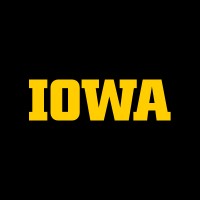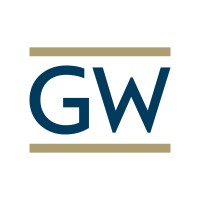
UCLA Company Cyber Security Posture
ucla.eduUCLA offers a combination that’s rare, especially among public research universities. The breadth, depth and inspired excellence among academic programs—from the visual and performing arts to the humanities, social sciences, STEM disciplines and health sciences—add up to endless opportunity. The location is unmatched: a campus that is unexpectedly picturesque and compact, set in a thriving and diverse global city.
UCLA Company Details
ucla
28633 employees
940654.0
611
Higher Education
ucla.edu
602
UCL_1454520
In-progress
Between 800 and 900
This score is AI-generated and less favored by cyber insurers, who prefer the TPRM score.
 UCLA Global Score
UCLA Global Score.png)

UCLA Company Scoring based on AI Models
| Model Name | Date | Description | Current Score Difference | Score |
|---|---|---|---|---|
| AVERAGE-Industry | 03-12-2025 | This score represents the average cybersecurity rating of companies already scanned within the same industry. It provides a benchmark to compare an individual company's security posture against its industry peers. | N/A | Between 800 and 900 |
UCLA Company Cyber Security News & History
| Entity | Type | Severity | Impact | Seen | Url ID | Details | View |
|---|---|---|---|---|---|---|---|
| UCLA Health | Breach | 80 | 4 | 09/2015 | UCL14320422 | Link | |
Rankiteo Explanation : Attack with significant impact with customers data leaksDescription: UCLA Health experienced a data breach incident in September 2015 after one of its laptop got stolen. The stolen laptop contained the personal information of approximately 1,242 patient of the organization including names and medical record numbers. UCLA Health notified all affected patient and retraining those involved with the incident. | |||||||
| UCI Health | Breach | 90 | 4 | 03/2015 | UCI2241522 | Link | |
Rankiteo Explanation : Attack with significant impact with customers data leaksDescription: An employee of UC Irvine Medical Center unethically viewed thousands of patient records over a four-year period. The incident compromised the personal health information including names, dates of birth, gender, medical record numbers, height, weight, medical center account numbers, allergy information, home address, medical documentation, diagnoses, test orders and results, of 4,859 patients . The center investigated the incident with the help of external security experts and notifies the affected patients. | |||||||
| UC San Diego Health | Breach | 60 | 4 | 07/2021 | UCS22335223 | Link | |
Rankiteo Explanation : Attack with significant impact with customers data leaksDescription: UC San Diego Health suffered from a data breach that exposed number of patients, employees and others connected to UC San Diego Health potentially. It was found that the breach occurred via unauthorized access to some employee email accounts, but it did not affect the continuity of care for their patients. A UCSD Health spokesperson said Tuesday that ransomware, software often used to extort money from an organization, was not involved. The compromised information includes full names, addresses, dates of birth, email addresses, fax numbers, claims information including dates and costs of care received, laboratory results, medical diagnoses and conditions, medical record numbers, prescription information, treatment information, Social Security numbers, government identification numbers, financial account numbers, student identification numbers, usernames and passwords. They notified people, and the letters each person receives precisely reflect the information that would have been impacted for that particular person. | |||||||
| UCLA Health | Data Leak | 60 | 4 | 06/2022 | UCL11139223 | Link | |
Rankiteo Explanation : Attack with significant impact with customers data leaksDescription: UCLA health experienced a data breach incident that 94,000 patients personal information and health data to third parties. UCLA Health promptly disabled the use of the tools and launched an investigation. The compromised information includes patients’ URL/website addresses, provider names, specialty, ad campaign names, page views, IP addresses, third-party cookies, and hashed values of certain fields on the appointment request form, such as patient names, email addresses, mailing addresses, phone numbers, and genders. UCLA Health website and the UCLA Health mobile app were affected. The UCLA Health patient portal was not impacted. | |||||||
| UCLA | Ransomware | 100 | 5 | 06/2023 | UCL0443723 | Link | |
Rankiteo Explanation : Attack threatening the organization’s existenceDescription: The five new MOVEit assaults victims revealed on the dark web leak site for the Clop ransomware organization include the industrial behemoths Siemens Energy, Schneider Electric, werum.com, UCLA (http://ucla.edu), Abbie (http://abbvie.com), and Abbie. Worldwide, vital national infrastructures use Industrial Control Systems (ICS) from Siemens Energy and Schneider Electric. Threat actors claim they were able to compromise 100 different firms utilizing the most recently revealed MOVEit Transfer vulnerability CVE-2023-34362. The US government offers rewards for information that leads to the arrest, indictment, or location of dangerous actors. | |||||||
| UC San Diego Health | Ransomware | 100 | 7 | 10/2023 | UCS1014070724 | Link | |
Rankiteo Explanation : Attack that could injure or kill peopleDescription: UC San Diego Health experienced a ransomware attack threatening critical healthcare operations. As the medical industry increases reliance on technology, such attacks can have dire consequences on patient care and outcomes. The attack's costliness, with an average of $11 million according to IBM, poses risks to smaller healthcare systems' existence, potentially leading to their permanent closure. Patients in remote areas would be most affected due to the scarcity of nearby medical facilities. In response, federal funding has been allocated to develop better preventative and mitigative measures, focusing on cybersecurity in healthcare. | |||||||
| University of California San Francisco (UCSF) | Ransomware | 100 | 4 | 12/2024 | UCS000122224 | Link | |
Rankiteo Explanation : Attack with significant impact with customers data leaksDescription: The University of California San Francisco suffered a significant ransomware attack at the hands of the NetWalker group, which resulted in the loss of access to critical data. In order to recover the encrypted files, UCSF was compelled to pay a substantial ransom of $1.14 million. This incident stressed the vulnerability of major institutions to sophisticated cyber threats, particularly during sensitive times such as the COVID-19 pandemic when reliance on digital infrastructure is at its peak. The attack not only financially impacted the university but also highlighted the potential risks to privacy and the continuation of essential services. | |||||||
UCLA Company Subsidiaries

UCLA offers a combination that’s rare, especially among public research universities. The breadth, depth and inspired excellence among academic programs—from the visual and performing arts to the humanities, social sciences, STEM disciplines and health sciences—add up to endless opportunity. The location is unmatched: a campus that is unexpectedly picturesque and compact, set in a thriving and diverse global city.
Access Data Using Our API

Get company history
.png)
UCLA Cyber Security News
UCLA Hosts Hybrid Cybersecurity Competition, LA CTF
The student teams competed with one another to solve more than 50 cybersecurity challenges over the weekend.
UCLA’s Drake Chang on phishing, ransomware and other cyber threats
UCLA's 'top IT cop' Drake Chang discusses the crucial importance of cybersecurity awareness and protection.
UC implements cybersecurity mandate
On May 28, 2025, a new cybersecurity mandate will fully go into effect for all University of California (UC) campuses, with several key ...
Amador Valley High Students Honored For Completing Cybersecurity Program
The school district on May 1 honored Abhinav Garg and Harshita Keerthipati for completing its inaugural Cybersecurity Youth Apprenticeship program — the first ...
China-backed hackers continue cyberattacks on telecom companies
China-backed hackers continue cyberattacks on telecom companies. Salt Typhoon threat actors compromised Cisco edge devices by exploiting older ...
Health Care Needs a Public-Private Solution to Cyberthreats
The U.S. health care system is under attack. Cybersecurity breaches by hackers are escalating exponentially, with cybercriminals exploiting ...
Illuminate Education faces lawsuit alleging failure to keep user data in the dark
A main allegation brought forward by J.M. was that Illuminate Education collected students' mental, physical and emotional health records for ...
Data Breach at UCLA Exposes Records on 800,000
A data breach at the University of California, Los Angeles (UCLA) has exposed records containing personal information—including some names, Social Security ...
FSU Law wins national cybersecurity moot court competition
The Florida State University College of Law Moot Court Team took first place in the UCLA School of Law Cybersecurity Moot Court Competition.

UCLA Similar Companies

Auburn University
Auburn University is a comprehensive land, space and sea grant research institution blending arts and applied sciences. The university continuously changes to accommodate today's needs, while still respecting the traditions and spirit of Auburn. As we grow and change, Auburn will always continue its

University of Wisconsin-Madison
In achievement and prestige, the University of Wisconsin–Madison has long been recognized as one of America's great universities. A public, land-grant institution, UW–Madison offers a complete spectrum of liberal arts studies, professional programs and student activities. Spanning 936 acres along th

Louisiana State University
LSU is the flagship institution of Louisiana and is one of only 30 universities nationwide holding land-grant, sea-grant and space-grant status. Since 1860, LSU has served its region, the nation, and the world through extensive, multipurpose programs encompassing instruction, research, and public

University of Ottawa
À l’Université d’Ottawa, la plus grande université bilingue au monde, la population étudiante peut choisir d’étudier en français, en anglais, ou dans les deux langues. Située au cœur de la capitale du Canada, pays du G8, notre université jouit d’un accès direct aux plus grandes institutions du pays.

University of Iowa
From the health sciences to the arts, our aim is to provide a diverse and technologically advanced community where all can work together to achieve excellence. On our beautiful campus spanning the Iowa River, our faculty and staff enjoy access to an array of cultural, educational, and recreational a

The George Washington University
The George Washington University, an independent academic institution chartered by the Congress of the United States in 1821, dedicates itself to furthering human well-being. The University values a dynamic, student-focused community stimulated by cultural and intellectual diversity and built upon a

Frequently Asked Questions (FAQ) on Cybersecurity Incidents
UCLA CyberSecurity History Information
Total Incidents: According to Rankiteo, UCLA has faced 7 incidents in the past.
Incident Types: The types of cybersecurity incidents that have occurred include ['Breach', 'Data Leak', 'Ransomware'].
Total Financial Loss: The total financial loss from these incidents is estimated to be {total_financial_loss}.
Cybersecurity Posture: The company's overall cybersecurity posture is described as UCLA offers a combination that’s rare, especially among public research universities. The breadth, depth and inspired excellence among academic programs—from the visual and performing arts to the humanities, social sciences, STEM disciplines and health sciences—add up to endless opportunity. The location is unmatched: a campus that is unexpectedly picturesque and compact, set in a thriving and diverse global city..
Detection and Response: The company detects and responds to cybersecurity incidents through {description_of_detection_and_response_process}.
Incident Details
Incident 1: Ransomware Attack
Title: {Incident_Title}
Description: {Brief_description_of_the_incident}
Date Detected: {Detection_Date}
Date Publicly Disclosed: {Disclosure_Date}
Date Resolved: {Resolution_Date}
Type: {Type_of_Attack}
Attack Vector: {Attack_Vector}
Vulnerability Exploited: {Vulnerability}
Threat Actor: {Threat_Actor}
Motivation: {Motivation}
Incident 2: Data Breach
Title: {Incident_Title}
Description: {Brief_description_of_the_incident}
Date Detected: {Detection_Date}
Date Publicly Disclosed: {Disclosure_Date}
Date Resolved: {Resolution_Date}
Type: {Type_of_Attack}
Attack Vector: {Attack_Vector}
Vulnerability Exploited: {Vulnerability}
Threat Actor: {Threat_Actor}
Motivation: {Motivation}
Common Attack Types: The most common types of attacks the company has faced are ['Breach', 'Ransomware'].
Identification of Attack Vectors: The company identifies the attack vectors used in incidents through {description_of_identification_process}.
Impact of the Incidents
Incident 1: Ransomware Attack
Financial Loss: {Financial_Loss}
Data Compromised: {Data_Compromised}
Systems Affected: {Systems_Affected}
Downtime: {Downtime}
Operational Impact: {Operational_Impact}
Conversion Rate Impact: {Conversion_Rate_Impact}
Revenue Loss: {Revenue_Loss}
Customer Complaints: {Customer_Complaints}
Brand Reputation Impact: {Brand_Reputation_Impact}
Legal Liabilities: {Legal_Liabilities}
Identity Theft Risk: {Identity_Theft_Risk}
Payment Information Risk: {Payment_Information_Risk}
Incident 2: Data Breach
Financial Loss: {Financial_Loss}
Data Compromised: {Data_Compromised}
Systems Affected: {Systems_Affected}
Downtime: {Downtime}
Operational Impact: {Operational_Impact}
Conversion Rate Impact: {Conversion_Rate_Impact}
Revenue Loss: {Revenue_Loss}
Customer Complaints: {Customer_Complaints}
Brand Reputation Impact: {Brand_Reputation_Impact}
Legal Liabilities: {Legal_Liabilities}
Identity Theft Risk: {Identity_Theft_Risk}
Payment Information Risk: {Payment_Information_Risk}
Average Financial Loss: The average financial loss per incident is {average_financial_loss}.
Commonly Compromised Data Types: The types of data most commonly compromised in incidents are {list_of_commonly_compromised_data_types}.
Incident 1: Ransomware Attack
Entity Name: {Entity_Name}
Entity Type: {Entity_Type}
Industry: {Industry}
Location: {Location}
Size: {Size}
Customers Affected: {Customers_Affected}
Incident 2: Data Breach
Entity Name: {Entity_Name}
Entity Type: {Entity_Type}
Industry: {Industry}
Location: {Location}
Size: {Size}
Customers Affected: {Customers_Affected}
Response to the Incidents
Incident 1: Ransomware Attack
Incident Response Plan Activated: {Yes/No}
Third Party Assistance: {Yes/No}
Law Enforcement Notified: {Yes/No}
Containment Measures: {Containment_Measures}
Remediation Measures: {Remediation_Measures}
Recovery Measures: {Recovery_Measures}
Communication Strategy: {Communication_Strategy}
Adaptive Behavioral WAF: {Adaptive_Behavioral_WAF}
On-Demand Scrubbing Services: {On_Demand_Scrubbing_Services}
Network Segmentation: {Network_Segmentation}
Enhanced Monitoring: {Enhanced_Monitoring}
Incident 2: Data Breach
Incident Response Plan Activated: {Yes/No}
Third Party Assistance: {Yes/No}
Law Enforcement Notified: {Yes/No}
Containment Measures: {Containment_Measures}
Remediation Measures: {Remediation_Measures}
Recovery Measures: {Recovery_Measures}
Communication Strategy: {Communication_Strategy}
Adaptive Behavioral WAF: {Adaptive_Behavioral_WAF}
On-Demand Scrubbing Services: {On_Demand_Scrubbing_Services}
Network Segmentation: {Network_Segmentation}
Enhanced Monitoring: {Enhanced_Monitoring}
Incident Response Plan: The company's incident response plan is described as {description_of_incident_response_plan}.
Third-Party Assistance: The company involves third-party assistance in incident response through {description_of_third_party_involvement}.
Data Breach Information
Incident 2: Data Breach
Type of Data Compromised: {Type_of_Data}
Number of Records Exposed: {Number_of_Records}
Sensitivity of Data: {Sensitivity_of_Data}
Data Exfiltration: {Yes/No}
Data Encryption: {Yes/No}
File Types Exposed: {File_Types}
Personally Identifiable Information: {Yes/No}
Prevention of Data Exfiltration: The company takes the following measures to prevent data exfiltration: {description_of_prevention_measures}.
Handling of PII Incidents: The company handles incidents involving personally identifiable information (PII) through {description_of_handling_process}.
Ransomware Information
Incident 1: Ransomware Attack
Ransom Demanded: {Ransom_Amount}
Ransom Paid: {Ransom_Paid}
Ransomware Strain: {Ransomware_Strain}
Data Encryption: {Yes/No}
Data Exfiltration: {Yes/No}
Ransom Payment Policy: The company's policy on paying ransoms in ransomware incidents is described as {description_of_ransom_payment_policy}.
Data Recovery from Ransomware: The company recovers data encrypted by ransomware through {description_of_data_recovery_process}.
Regulatory Compliance
Incident 1: Ransomware Attack
Regulations Violated: {Regulations_Violated}
Fines Imposed: {Fines_Imposed}
Legal Actions: {Legal_Actions}
Regulatory Notifications: {Regulatory_Notifications}
Incident 2: Data Breach
Regulations Violated: {Regulations_Violated}
Fines Imposed: {Fines_Imposed}
Legal Actions: {Legal_Actions}
Regulatory Notifications: {Regulatory_Notifications}
Regulatory Frameworks: The company complies with the following regulatory frameworks regarding cybersecurity: {list_of_regulatory_frameworks}.
Ensuring Regulatory Compliance: The company ensures compliance with regulatory requirements through {description_of_compliance_measures}.
Lessons Learned and Recommendations
Incident 1: Ransomware Attack
Lessons Learned: {Lessons_Learned}
Incident 2: Data Breach
Lessons Learned: {Lessons_Learned}
Incident 1: Ransomware Attack
Recommendations: {Recommendations}
Incident 2: Data Breach
Recommendations: {Recommendations}
Key Lessons Learned: The key lessons learned from past incidents are {list_of_key_lessons_learned}.
Implemented Recommendations: The company has implemented the following recommendations to improve cybersecurity: {list_of_implemented_recommendations}.
References
Additional Resources: Stakeholders can find additional resources on cybersecurity best practices at {list_of_additional_resources}.
Investigation Status
Incident 1: Ransomware Attack
Investigation Status: {Investigation_Status}
Incident 2: Data Breach
Investigation Status: {Investigation_Status}
Communication of Investigation Status: The company communicates the status of incident investigations to stakeholders through {description_of_communication_process}.
Stakeholder and Customer Advisories
Incident 1: Ransomware Attack
Stakeholder Advisories: {Stakeholder_Advisories}
Customer Advisories: {Customer_Advisories}
Incident 2: Data Breach
Stakeholder Advisories: {Stakeholder_Advisories}
Customer Advisories: {Customer_Advisories}
Advisories Provided: The company provides the following advisories to stakeholders and customers following an incident: {description_of_advisories_provided}.
Initial Access Broker
Incident 1: Ransomware Attack
Entry Point: {Entry_Point}
Reconnaissance Period: {Reconnaissance_Period}
Backdoors Established: {Backdoors_Established}
High Value Targets: {High_Value_Targets}
Data Sold on Dark Web: {Yes/No}
Incident 2: Data Breach
Entry Point: {Entry_Point}
Reconnaissance Period: {Reconnaissance_Period}
Backdoors Established: {Backdoors_Established}
High Value Targets: {High_Value_Targets}
Data Sold on Dark Web: {Yes/No}
Monitoring and Mitigation of Initial Access Brokers: The company monitors and mitigates the activities of initial access brokers through {description_of_monitoring_and_mitigation_measures}.
Post-Incident Analysis
Incident 1: Ransomware Attack
Root Causes: {Root_Causes}
Corrective Actions: {Corrective_Actions}
Incident 2: Data Breach
Root Causes: {Root_Causes}
Corrective Actions: {Corrective_Actions}
Post-Incident Analysis Process: The company's process for conducting post-incident analysis is described as {description_of_post_incident_analysis_process}.
Corrective Actions Taken: The company has taken the following corrective actions based on post-incident analysis: {list_of_corrective_actions_taken}.
Additional Questions
General Information
Ransom Payment History: The company has {paid/not_paid} ransoms in the past.
Last Ransom Demanded: The amount of the last ransom demanded was {last_ransom_amount}.
Last Attacking Group: The attacking group in the last incident was {last_attacking_group}.
Incident Details
Most Recent Incident Detected: The most recent incident detected was on {most_recent_incident_detected_date}.
Most Recent Incident Publicly Disclosed: The most recent incident publicly disclosed was on {most_recent_incident_publicly_disclosed_date}.
Most Recent Incident Resolved: The most recent incident resolved was on {most_recent_incident_resolved_date}.
Impact of the Incidents
Highest Financial Loss: The highest financial loss from an incident was {highest_financial_loss}.
Most Significant Data Compromised: The most significant data compromised in an incident was {most_significant_data_compromised}.
Most Significant System Affected: The most significant system affected in an incident was {most_significant_system_affected}.
Response to the Incidents
Third-Party Assistance in Most Recent Incident: The third-party assistance involved in the most recent incident was {third_party_assistance_in_most_recent_incident}.
Containment Measures in Most Recent Incident: The containment measures taken in the most recent incident were {containment_measures_in_most_recent_incident}.
Data Breach Information
Most Sensitive Data Compromised: The most sensitive data compromised in a breach was {most_sensitive_data_compromised}.
Number of Records Exposed: The number of records exposed in the most significant breach was {number_of_records_exposed}.
Ransomware Information
Highest Ransom Demanded: The highest ransom demanded in a ransomware incident was {highest_ransom_demanded}.
Highest Ransom Paid: The highest ransom paid in a ransomware incident was {highest_ransom_paid}.
Regulatory Compliance
Highest Fine Imposed: The highest fine imposed for a regulatory violation was {highest_fine_imposed}.
Most Significant Legal Action: The most significant legal action taken for a regulatory violation was {most_significant_legal_action}.
Lessons Learned and Recommendations
Most Significant Lesson Learned: The most significant lesson learned from past incidents was {most_significant_lesson_learned}.
Most Significant Recommendation Implemented: The most significant recommendation implemented to improve cybersecurity was {most_significant_recommendation_implemented}.
References
Most Recent Source: The most recent source of information about an incident is {most_recent_source}.
Most Recent URL for Additional Resources: The most recent URL for additional resources on cybersecurity best practices is {most_recent_url}.
Investigation Status
Current Status of Most Recent Investigation: The current status of the most recent investigation is {current_status_of_most_recent_investigation}.
Stakeholder and Customer Advisories
Most Recent Stakeholder Advisory: The most recent stakeholder advisory issued was {most_recent_stakeholder_advisory}.
Most Recent Customer Advisory: The most recent customer advisory issued was {most_recent_customer_advisory}.
Initial Access Broker
Most Recent Entry Point: The most recent entry point used by an initial access broker was {most_recent_entry_point}.
Most Recent Reconnaissance Period: The most recent reconnaissance period for an incident was {most_recent_reconnaissance_period}.
Post-Incident Analysis
Most Significant Root Cause: The most significant root cause identified in post-incident analysis was {most_significant_root_cause}.
Most Significant Corrective Action: The most significant corrective action taken based on post-incident analysis was {most_significant_corrective_action}.
What Do We Measure?
















Every week, Rankiteo analyzes billions of signals to give organizations a sharper, faster view of emerging risks. With deeper, more actionable intelligence at their fingertips, security teams can outpace threat actors, respond instantly to Zero-Day attacks, and dramatically shrink their risk exposure window.
These are some of the factors we use to calculate the overall score:
Identify exposed access points, detect misconfigured SSL certificates, and uncover vulnerabilities across the network infrastructure.
Gain visibility into the software components used within an organization to detect vulnerabilities, manage risk, and ensure supply chain security.
Monitor and manage all IT assets and their configurations to ensure accurate, real-time visibility across the company's technology environment.
Leverage real-time insights on active threats, malware campaigns, and emerging vulnerabilities to proactively defend against evolving cyberattacks.




